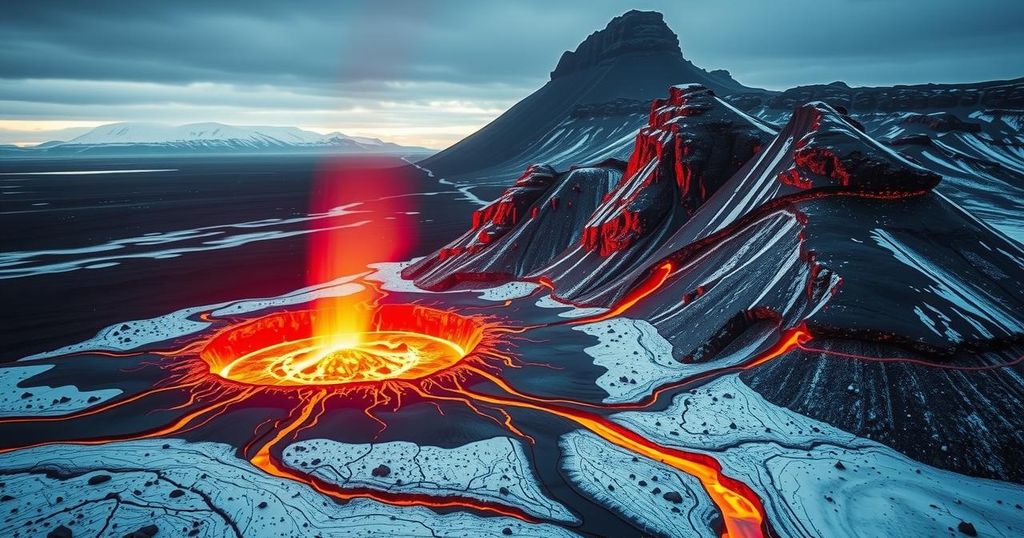Increased Seismic Activity at Bárðarbunga Raises Eruption Concerns
Bárðarbunga volcano experienced a magnitude 3.8 earthquake yesterday, amidst signs of increased volcanic activity. Natural disaster expert Böðvar Sveinsson indicated that while warning signs are present, the situation does not yet necessitate major emergency responses. The current seismic activity is the highest since the significant eruption of Holuhraun in 2015, with multiple larger earthquakes recorded this year. Monitoring efforts by the Icelandic Meteorological Office indicate ongoing ground inflation around the volcano, suggesting magma movement beneath the surface.
Bárðarbunga has experienced seismic activity, evidenced by a magnitude 3.8 earthquake that occurred at approximately 4:30 PM yesterday. Recent months have shown an increase in volcanic activity, suggesting that the volcano may be gearing up for an eruption. Observations indicate that the current level of activity is the highest since the significant volcanic eruption at Holuhraun in 2015, characterized by inflating ground and seismic events indicative of magma influx beneath the surface.
Natural disaster expert Böðvar Sveinsson commented on the situation, saying, “There is always a certain warning when something like this happens. But this is not the case in which we set everything in motion,” noting that significant earthquakes have become commonplace in the region. Despite the increased activities, officials maintain that the current situation does not warrant a full-scale emergency response.
This year, four earthquakes registering magnitude 5 or higher have struck the Bárðarbunga area, occurring in April, September, October, and early December. The most recent earthquake above magnitude 3 was recorded on December 19. The Icelandic Meteorological Office has reported signs of ground inflation specifically around the caldera, which underscores the buildup of pressure within the volcano’s structure. Such geological phenomena underscore the dynamics of volcanic systems and the potential for future eruptions.
Bárðarbunga is a prominent stratovolcano in Iceland, known for its past eruptions, the most notable being in 2014-2015, which resulted in the Holuhraun lava field. The volcano is situated beneath the Vatnajökull glacier, making its activity crucial for understanding volcanic hazards in Iceland. The monitoring of seismic activity, ground deformation, and other geological indicators plays an important role in predicting eruptions and assessing potential risks to nearby populations. As Iceland battles geothermal forces, the responsibility to ensure safety requires constant vigilance from natural disaster experts and geological institutions.
In summary, the Bárðarbunga volcano is currently experiencing significant seismic activity, raising concerns about a potential eruption. With a recent earthquake recorded at magnitude 3.8 and several large quakes earlier this year, geological monitoring remains imperative. While experts suggest the situation requires cautious observation rather than immediate action, the increase in volcanic activity signals a need for preparedness and continued scientific scrutiny.
Original Source: icelandmonitor.mbl.is




Post Comment